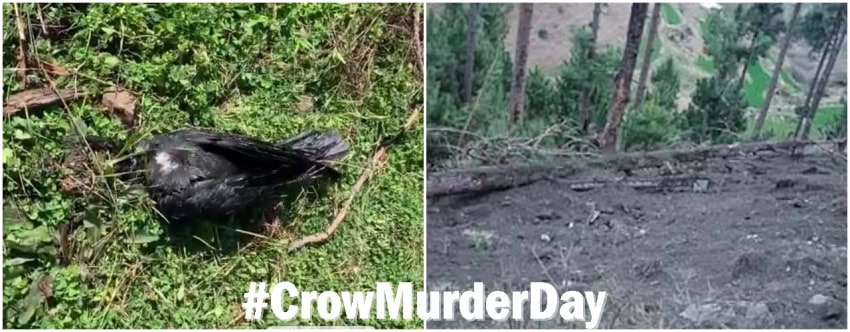ISLAMABAD – On 26 February 2019, Indian air force carried out a fake surgical strike, crossing over Pakistani border into Balakot. Soon after entering Pakistani air space, Indian fighter planes were met with the brave Pakistani ‘Shaheens’ who forced them to flee back instantly.
In their attempt to reach safety, Indian planes dumped their bombs in open fields of Balakot. The only damage they managed to inflict on Pakistani soil was two uprooted trees and a dead crow.
In an attempt to strengthen the claim of killing “hundreds of terrorists” in Balakot, India’s media came up with a doctored video from Pakistan to save the reputation of their country’s air force.
Indian media claimed the alleged ‘surgical strike’ was in retaliation to the Pulwama attack. It has been proven that Modi government staged the Pulwama attack and then the Feb 26 failed surgical strike for media publicity to garner votes.
Today, Pakistan remembers the cowardly act of the neighboring country and celebrates the day as #CrowMurderDay and the hashtag is trending on twitter.
https://twitter.com/peaceforpak1947/status/1365206239878275073
India killed one brave crow in Balakot strike. #CrowMurderDay pic.twitter.com/BeZirjzu12
— Maha Ali (@ItsMaha_01) February 26, 2021
https://twitter.com/iqrahoormakhan/status/1365210241508511747
26 Feb should be celebrated at #CrowMurderDay we have lost 2 trees and one crow that day.
27 feb will be remember by every kid of the enemy.@OfficialDGISPR @Kashmiris @Soldiers pic.twitter.com/qotoe11ZO2— Rana Tariq (@ranatariq337) February 26, 2021
Eco-terrorism
Not only that the Pakistan Air Force had valiantly forced the enemy out of its airspace, the country took a strong exception to India’s aggression and handed over a dossier to the United Nations Environment Program, pleading to declare India an eco-terrorist for its alleged surgical strike.
Balakot strike: Pakistan submits dossier to UN for declaring India eco-terrorist
International media investigated the tall claims by India. The British news agency Reuters submitted high-resolution satellite images showing buildings which India claimed its warplanes had hit in Balakot killing a large number of “militants” still standing at the site.
India’s foreign and defense ministries did not reply to Reuters’ emailed questions sent in the past few days seeking comment on what is shown in the satellite images and whether they undermine its official statements on the airstrikes.
Operation Swift Retort
A day after IAF fighter jets claimed to have hit a militant camp in Balakot in northern Pakistan, early dawn on Feb 27 saw retaliation from the Pakistan Air Force (PAF).
After an aerial engagement in Jammu and Kashmir’s Nowshera sector, Pakistan captured one Indian pilot – identified as Wing Commander Abhinandan Varthaman, who praised the professionalism of Pakistan Army but denied to share any sensitive information.
His warplane, MiG 21 Bison, hit by Wing Commander Nauman Ali Khan, had crashed on Pakistani side of the Line of Control, while the second IAF fighter jet Sukhoi Su-30, which was downed by Sqn Leader Hassan Siddiqui, landed on the Indian side.
The same day, India confirmed the loss of one plane (MiG-21 Bison) and claimed it also shot down a Pakistani jet (F-16) as it responded to the incident. However, the Indian claim was later debunked by US officials who said that they have counted the number of Pakistan Air Force F-16s in service and can say that none were lost to the Indian Air Force on that day.
On March 1 in 2019, Pakistan handed over the IAF pilot to India authorities as a gesture of goodwill, never acknowledged by the hardline Hindu government in New Delhi.
The Pakistan Air Force (PAF) remembers its Feb 27 response against India as Operation Swift Retort.













